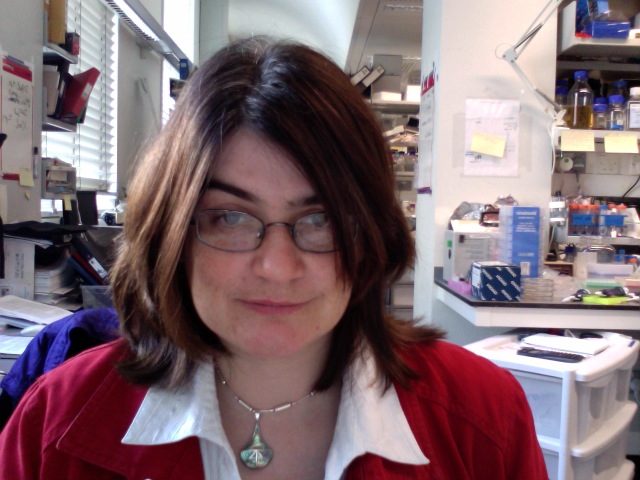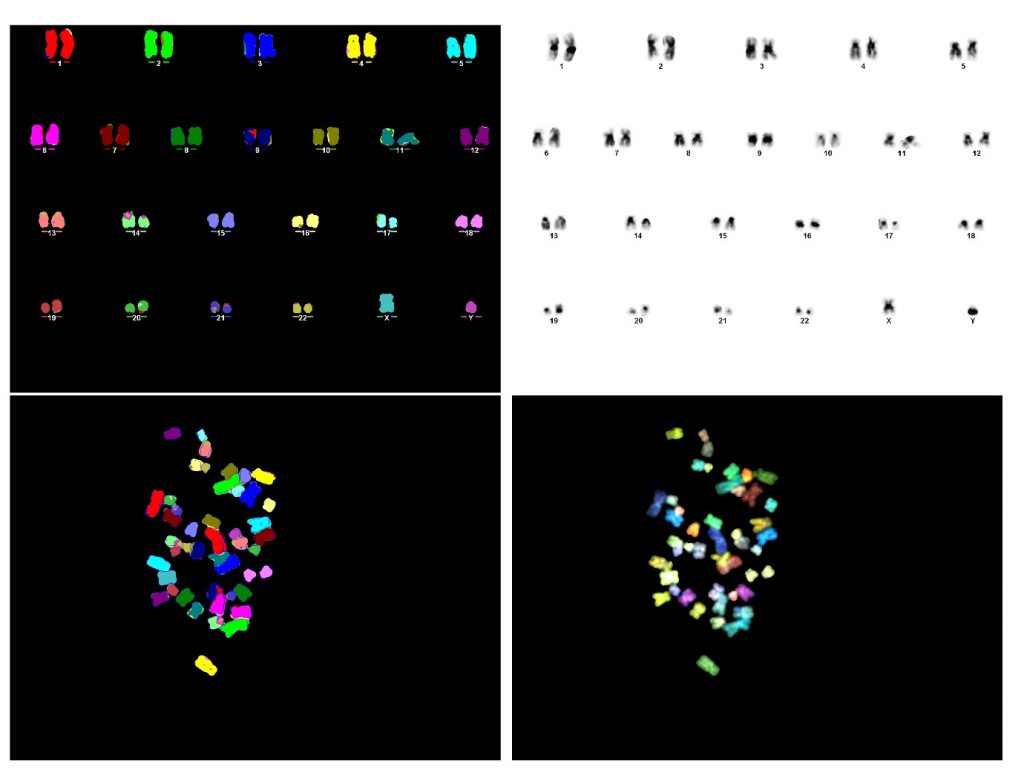Daniela Moralli
September 24, 2020 · 4 min read
Ex Novo – Science behind the scenes
“Ex Novo – Science behind the scenes” is a series of articles born within ISA’s blog in collaboration with the Collegio Nuovo – Fondazione Sandra e Enea Mattei in Pavia, whose students community is marked by a strong presence of women in science. Science is research, long hours to carry out experiments in the laboratory or in the field, but science is also communication, grant writing, entrepreneurship, administration, teaching, project management, leadership and many other facets. We will post articles, interviews and short stories on these multiple aspects of the scientific endeavour. Should you like to contribute with your experience, do not hesitate to get in touch with Michela, ISA’s Head and Collegio Nuovo Alumna, here: michela.bertero@crg.eu.
Behind the scenes of a “Core” laboratory
For this article, I interviewed Daniela Moralli, currently manager of the Chromosome Dynamics Core at the Wellcome Centre for Human Genetics, University of Oxford. We explored with her the research and skills behind the scenes of a technological platform, what we call here a “Core” laboratory, offering high-end technologies in a biomedical research institute.
Daniela, you initially started a “classical” career in science…
I knew I wanted to work in Genetics ever since I studied Mendel’s laws in high school. I found fascinating the idea of discovering through plant crossing what the genetic make-up of an organism is, and I wanted to know more. Very naively, I thought that to be a researcher was a straight line: you go to the university, you study as much as possible, and then you run your laboratory to design new and wonderful experiments, to find new and exciting things. Little did I know that a scientist career is not really so linear and a large number of external factors can affect its outcome!
What was your passion in research?
I was rather fortunate, as I was able to work for a very long time on my favourite research project, focusing on the use of human artificial chromosomes as vectors for gene therapy. At the time, the tools available to modify the genome were very few, and only worked well for short DNA sequences. The idea of assembling or modifying human chromosomes to carry any desired transgene was very attractive, but also very difficult to attain. No kit was available to do what we wanted to do, and we had to come up with creative ideas ourselves. I did my undergraduate, specialisation, and PhD thesis on this topic, always working in the same laboratory in Pavia, first with Professor Luigi de Carli, and then with Professor Elena Raimondi. This experience gave me the chance to gain skills in a large variety of techniques, from classical cytogenetics to in vivo recombineering, but it also made me realise that I needed to experience working in a different environment. When I saw a job advert for a post-doctoral position with Dr Zoia Larin-Monaco, at the University of Oxford, I grabbed the opportunity, as I had read all of her papers and I knew she was at the forefront of the human artificial chromosomes field. Oxford is justly renowned all over the world, and the people, facilities and opportunities available are exceptional. I worked with Zoia for several years, and we are still collaborating now. She decided to move the laboratory to Boston, and I was supposed to join her there, but life intervened and made me decide against moving to the US.
When and why did you decide to switch from research to a managerial role in technology?
It was very serendipitous! A position within the Chromosome Dynamic Core [1] became available at the right time, when I wanted to finish working on my own specific project, while remaining in the UK. A Core Facility or Core lab is a technological platform that offers expertise and services on specific technologies to researchers at the institute, and everywhere in the world. The mission of what we call simply a “Core” is not to do research but to develop and offer expensive and sophisticated technologies that otherwise would not be possible in a single lab. Initially I worked 80% of the time on Core projects, and 20% on my human artificial chromosome research. Over time, I realised I quite enjoyed the variety of research topics brought about by Core work, and being able to help different groups in obtaining their results was very rewarding.

Daniela in her Core lab.
How is the day of the manager of a Core lab?
Typically, a good part of the day is spent discussing experiments and results with users. We discuss which technical procedure is best suited to answer specific questions, and what can be determined or not. Managing expectations is an important part of the role. Then comes the experiment design. Which controls should be included to make sure that the results are reliable? How many samples, or cells do we need to analyse to have enough statistical power to determine if differences between categories are significant? As the Chromosome Dynamics Core is quite small (we are 3 members), I still need to do a lot of bench work and microscope work myself, which is great, because I really enjoy it. I love when experiments work really well, and you get a clear-cut result, even though sometimes it is not really what we expected…but this is science! I also spend a lot of time training junior members of our staff. I enjoy this part of the role too, because younger people bring a fresh perspective, and often ask interesting questions, which open up new investigation avenues. They also stop me from becoming too entrenched in my own ways.
When do you get excited? …and frustrated?
Starting to work in a completely new field is exciting! I have to learn as much as possible about the basics, set up and test new techniques, and find people that can help me with their expertise. For example, before the COVID19 lockdown, we were asked to use super-resolution microscopy to look at meiotic proteins, and I took the opportunity to prepare myself as much as possible. After being at home for a long time because of the pandemic, I could not wait to go back to the lab to actually prepare the slides, and analyse them. In typical Murphy’s law fashion, the super resolution microscope developed a fault right when we were allowed back to work! This is of course very frustrating. Even more frustrating, though is not being able to help someone because they have started with the wrong foot, and not designed properly the experiment in consultation with us. They have chosen, for example, the wrong cell line. They may have invested time and effort in generating clones, and they want to see if there are differences in chromosomal instability between clones, but they have picked a cell line with a robust genome controlling system, which prevents chromosomal abnormalities from becoming detectable.

Examples of the beautiful images obtained in Daniela´s Core, when experiments work! Karyotype of a normal human cell, obtained by multicolour FISH (M-FISH).
What skills did you learn that you believe are also relevant for a researcher?
The importance of planning, so that time, resources and equipment are managed as efficiently as possible. When juggling several projects, it is essential to know what needs to be done immediately, and what can be put on the back burner for a while. Being able to communicate clearly is also a very important skill: presentations and reports have to be concise, but complete. Never assume that everyone knows what you are talking about.
What are your final “tips” for junior researchers at the first steps in their career?
Find out what really interests you, because working on something you don’t care about can be very disappointing. However, especially at the beginning of your career, keep an open mind and do not restrict yourself too much: try to read and follow disparate topics, as they may help you finding connections and may be useful later in your career. Ask experts if they can show you how to carry out specific techniques. Again, they may not be immediately useful, but they may become so later. Most important of all, get to know yourself, and know what you want!
[1] https://www.well.ox.ac.uk/research/scientific-cores/chromosome-dynamics